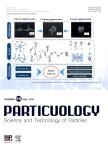Particle convective heat transfer near the wall in a supercritical water fluidized bed by single particle model coupled with CFD-DEM
作者机构:State Key Laboratory of Multiphase Flow in Power Engineering(SKLMFPE)Xi'an Jiaotong UniversityXi'an710049ShaanxiChina Xi'an Electronic Engineering Research InstituteXi'an710100ShaanxiChina
出 版 物:《Particuology》 (颗粒学报(英文版))
年 卷 期:2023年第73卷第2期
页 面:47-58页
核心收录:
学科分类:080704[工学-流体机械及工程] 080103[工学-流体力学] 08[工学] 0807[工学-动力工程及工程热物理] 0812[工学-计算机科学与技术(可授工学、理学学位)] 0801[工学-力学(可授工学、理学学位)]
基 金:supported by the National Key Research and Development Program of China (grant No.2020YFA0714400) the National Natural Science Foundation of China (grant No.51925602)
主 题:Supercritical water Fluidized bed Particle residence time Discrete element method Single particle model
摘 要:Supercritical water fluidized bed(SCWFB)is a promising reactor to gasify biomass or *** optimization design is closely related to wall-to-bed heat transfer,where particle convective heat transfer plays an important *** paper evaluates the particle convective heat transfer coefficient(h_(pc))at the wall in SCWFB using the single particle *** critical parameters in the single particle model which is difficult to get experimentally are obtained by the computational fluid dynamics-discrete element method(CFD-DEM).The contact statistics related to particle-to-wall heat transfer,such as contact number and contact distance,are also *** results show that particle residence time(τ),as the key parameter to evaluate h_(pc),is found to decrease with rising velocity,while increase with larger thermal boundary layer thickness.τfollows a gamma function initially adopted in the gas-solid fluidized bed,making it possible to evaluate h_(pc) in SCWFB by a simplified single particle *** theoretical predicted h_(pc) tends to increase with rising thermal gradient thickness at a lower velocity(1.5 U_(mf)),while first decreases and then increases at higher velocity(1.75 and 2 U_(mf)).h_(pc) occupies 30%-57%of the overall wall-to-bed heat transfer coefficient for a particle diameter of 0.25 *** results are helpful to predict the overall wall-to-bed heat transfer coefficient in SCWFB combined with a reasonable fluid convective heat transfer model from a theoretical perspective.



